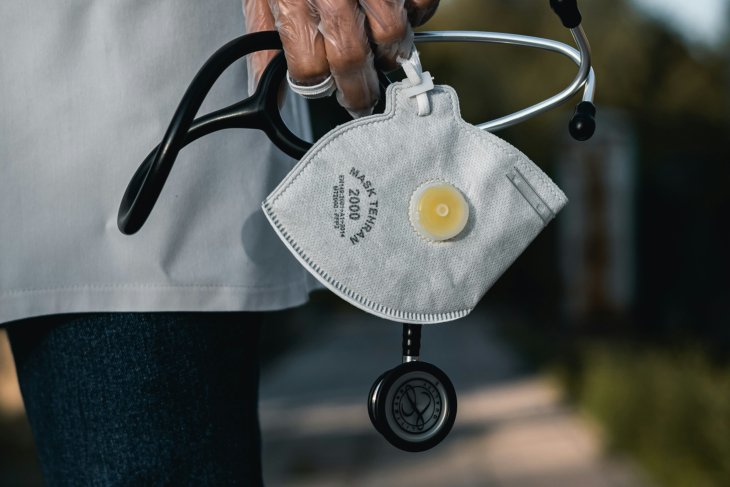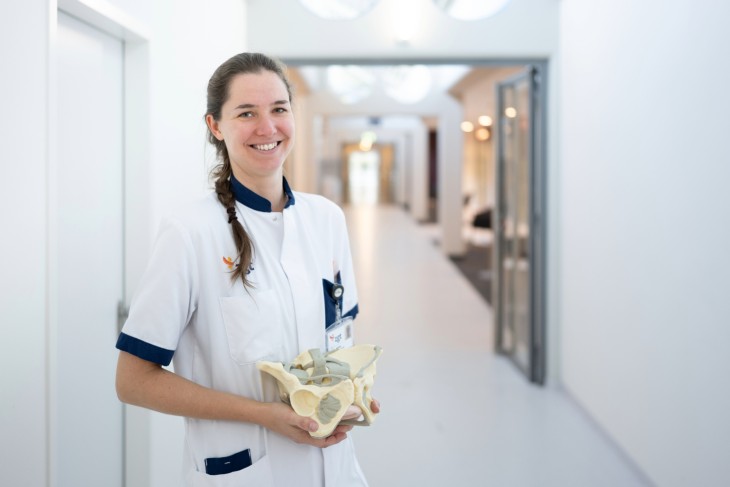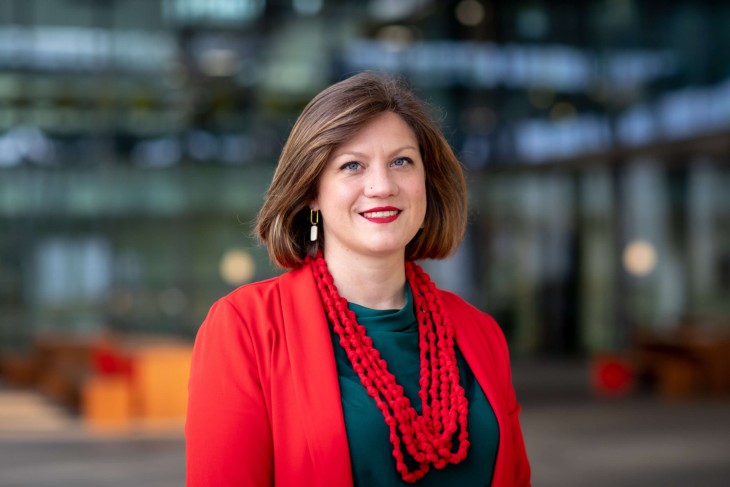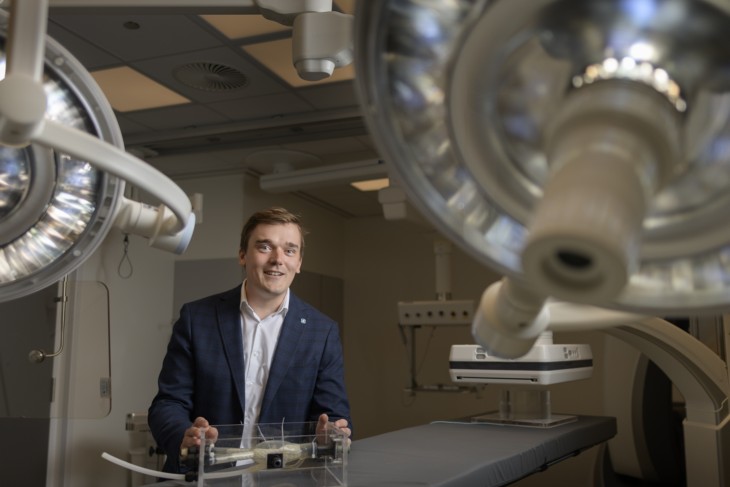Blanford explores how geographic factors affect health outcomes, how to respond to them, and how to communicate about them through maps. As medicine and society become more digital, it is increasingly important to collaborate with scientists at the Technical Medical Centre so that we can better understand the relationship between our environment and our health, Blanford argues.
Malaria
All research in which Blanford is involved relates to human health, often in relation to climate and climate change. "My PhD was about biological control. I mapped out where and when you can use a biopesticide instead of chemicals against agricultural pests. The methods used can translate to human-related topics, where the environment can influence the outcomes of disease. The relationship between temperature and malaria risk, for example."
The latter is just one of the examples of research in the field of GeoHealth that Blanford is currently working on at the University of Twente. "It's a unique place to do this," she says, "because it's the only place in the world with such a high concentration of GIScientists (GIS), which makes it easy to find an expert in any of the areas of this diverse field."
GeoHealth is a field that integrates geography with epidemiology and data science, among other computational engineering skills. "It's interdisciplinary," says Blanford. "Therefore, depending on the focus of the disease or the health topic, you may need professionals with knowledge about different health systems. Or about the environment or a process in the area. We have that here."
For example, the department has a PhD student who is working on a better understanding of the mental health effects of floods on older adults. According to Blanford, this requires bringing together people with expertise in the local community, supplemented by their own scientists. "People who have specific knowledge about working with hazards, or applying participatory methods to engage with local communities."
Health mapping
Analysing a health problem may require multiple types of information. "A good example is a recent analysis we did on the spread of malaria and how it has changed over time," says Blanford. "We mapped out where recurring hotspot areas were over two ten-year periods. We saw that the distribution of the hotspot areas has changed during those two ten-year periods. To understand what explains this, we added additional information on climate, land-use change, urban development and other environmental characteristics. By zooming in and out of the map and switching layers on and off, we learned more about what could happen locally in these hotspot areas. Satellite images provide the information that helps us to get a broad overview of this."
Another example, closer to home. In collaboration with the TechMed Centre and a local microbiology laboratory, research has been conducted into various rodent and tick-borne diseases in this region and how they were related to the climate. "We mapped out where the diseases occurred, to see if there was a pattern related to their occurrence. We then investigated whether this is related to land use and climate."
A third example is the mapping of heatwaves in the Netherlands. "At the moment we have several projects running in the field of heat. For one of them, we examined twenty years of temperature data. We used the heatwave definition used in the Netherlands and found that most heatwaves occur between the period 15 July and 15 August. We also used satellite information to further investigate the heat risk at the city level. With this, we identified who may be most vulnerable on these hot days."
GeoHealth and policymakers
From a health perspective, more can be done to leverage geospatial data for health, Blanford believes. "A lot is being done to better understand the spread of diseases. But numerous infrastructures are needed to hold the vast amounts of data we collect. Managing and maintaining datasets is costly, but valuable, especially if you have data that spans decades. Not only for malaria, but also for other diseases. Being able to follow changing trends is useful for managing resources."
Steps can also be taken to increase knowledge about the application of GeoHealth, Blanford emphasises. "It takes time to get GIS into the workflow and find the right balance between need and use. Moreover, we know that healthcare professionals have a large workload. So, we need to explore how to offer GeoHealth information in a way that is applicable and useful for different health professionals. We are working on awareness."
For example, one of its own studies showed that most cases of tick-borne encephalitis in the Netherlands, a tick-borne disease, were contracted during travel within Europe. "Knowing that these diseases are imported helps with better diagnosis, but also with raising awareness. And it helps visitors better prepare for a visit to these high-risk areas."



